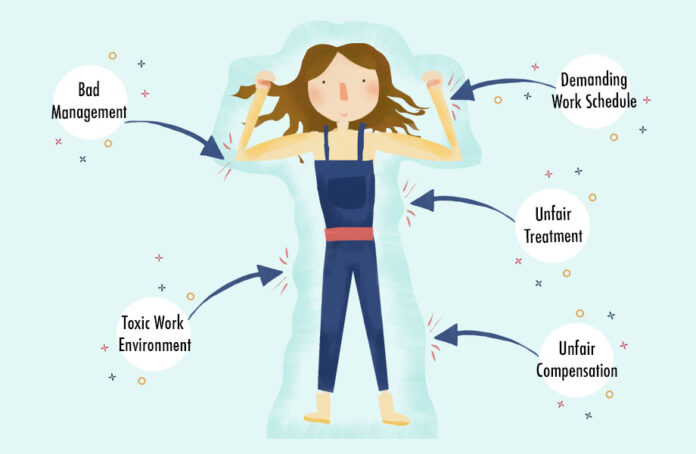An organization’s success depends heavily on how efficiently they leverage its talent pool. Effective resource utilization helps companies generate the desired ROI and meet their business goals.
Although achieving optimal resource utilization is paramount for business sustainability and profitability, it’s challenging for most organizations. Underutilization leads to lower employee morale and productivity. On the other hand, overutilization causes burnout, compromised work quality, and unplanned attrition. Both events can have a negative influence on your organization’s health index.
Therefore, companies need to take appropriate course-corrective initiatives and optimize the utilization levels of every resource.
This blog sheds light on the side effects of over/underutilization on employee productivity and how Saviom’s resource management solution can help address them.

1. What is the over/underutilization of resources?
Overutilization is the workplace phenomenon where resources are assigned more work than their fixed capacity. In contrast, underutilization is when employees’ skills and capabilities are not appropriately leveraged to achieve business objectives. Both can lead to employee disengagement, low morale, and attrition.
For instance, a senior PHP web developer works on two projects simultaneously at 50% capacity in an IT consultancy firm. When a pipeline project demand comes to the fore, the same developer is assigned to the project due to the unavailability of other resources. Since he is already working at 100% capacity, his workload has increased by 30% with the new project work. This is a classic example of overutilization.
On the other hand, another PHP web developer has been assigned to a project at 60% capacity. The remaining 40% is spent on BAU activities. After working on the assignment for four months, the resource feels that his expertise is not being used judiciously. As a result, he begins to show signs of disengagement. This is an example of underutilization.
Now let’s look at the adverse impact of over/underutilization on workforce productivity.

2. The adverse effects of over/underutilization
Over/underutilization can negatively impact employee productivity and lower organizational profitability. Here are the five side effects of sub-optimal utilization:
2.1. Decreased employee engagement and productivity
Generally, over/underutilized resources become disengaged because their unique skills and expertise are not appropriately leveraged by the employer. Overutilized employees experience high stress and anxiety levels induced by an excessive workload. Over time, the resources may become dissatisfied with their job, which can hamper their ability to produce good results.
On the other hand, underutilized employees may feel undervalued or unappreciated. It affects their commitment to a task as well as their overall approach to work. Therefore, these resources would put minimal effort into their project activities, resulting in reduced productivity.

2.2. High employee burnout and work-related stress
“According to a survey by Deloitte, 77 percent of 1000 respondents experienced employee burnout at their current job, with more than half citing more than one occurrence.”
Resources that deal with the overwhelming workload for prolonged periods experience work-related stress and mental and physical exhaustion. In the long run, this can lead to burnout. As a result, resources lack the motivation to work, adversely impacting their performance.
The high levels of anxiety associated with burnout can hamper an employee’s workflow, causing them to miss deadlines or deliver tasks at a languid pace. Further, they may find it difficult to concentrate on their current engagements and become more prone to accidents or mistakes. Therefore, it results in poor employee productivity.
2.3 Surge in unplanned absences and attrition
Since over/underutilized resources tend to have higher disengagement towards their job, they are more likely to take unplanned leaves such as sick leaves and personal days off. Alternatively, underutilized employees who are not working at their maximum capacity would quickly get bored.
Therefore, they will likely take more unplanned leaves and vacation days to engage in other activities and fill their time. Moreover, employees who feel constant burnout or feel that they are not doing valuable work would choose to leave the organization in search of better opportunities. As a result, it leads to a higher attrition rate.

2.4. Compromised quality and delayed project delivery
Another consequence of over and underutilization is compromised quality of work and delayed project delivery. When resources are overloaded, they will struggle to manage multiple projects simultaneously. For example, if a skilled person already working on two high-priority projects at total capacity is given additional tasks, they would struggle with managing the workload. They would have to work overtime to fulfill the assignment, resulting in burnout and delayed submission.
In contrast, underutilized resources may feel less valued because they lack opportunities to hone their skills and diversify their portfolios. Hence, they may not be willing to put the right amount of effort into their job, thereby hampering their work quality and overall performance. Moreover, the lack of work commitment could derail project delivery as the underutilized resources would not perform their job optimally or to the best of their ability.
2.5. Extended bench time of resources
Many organizations have ramp-up and ramp-down phases in their project lifecycle. During the ramp-down activities, numerous resources are rolled off the project. However, managers cannot forward plan work for rolled-off resources when they do not have adequate visibility. As a result, these resources spend idle time on the bench.
An extended bench period means that valuable resources are underutilized, and the company is incurring revenue loss. Further, being on the bench can affect employee morale. They can become increasingly disengaged and unmotivated, which results in sub-optimal productivity. Consequently, it will lead to unplanned attrition.
Now that we understand the impact of over/underutilization on workforce productivity let’s learn how futuristic resource management solutions can help mitigate it.

3. How can resource management software help ensure optimal utilization?
Ensuring optimal resource utilization is critical for organizations to unlock the true potential of their available workforce. Modern resource management solution can help organizations tackle the issue of over/underutilization.
Here’s how:
The software provides 360-degree resource visibility and advanced filters that enable firms to find appropriate project resources, ensuring competent allocation.
Additionally, the tool’s capacity planning feature and the capacity vs. demand report can help forecast pipeline project demand and identify resource excess or shortage in advance. Therefore, managers can take corrective measures to bridge the gap proactively.
Companies can also analyze bench and project vacancy reports to complete project fulfillment requests on time. Managers can leverage these reports to identify and allocate benched resources to suitable projects, reducing their bench time and minimizing billable losses.
Additionally, forecast vs. actual utilization reports and color-coded heatmaps can help identify over/underutilization and take corrective measures ahead of time. Therefore, the advanced functionalities of the tool can help organizations foster enterprise-wide productive resource utilization.
Conclusion
Effective resource utilization plays a crucial role in helping businesses meet client expectations. Conversely, imbalances in resource utilization indicate that the organization is probably not making the most of some of its employees’ work capacity while putting too much work on others.
When over/underutilization is not addressed timely, it can lead to dire consequences such as poor productivity, low morale, and attrition. However, companies can proactively adopt resource management solutions to mitigate this issue before it becomes a bottleneck.





![Calgary’s Hottest Neighborhoods for Luxury Homebuyers [2024]](https://thewashingtonote.com/wp-content/uploads/2024/04/Calgary-324x160.png)



